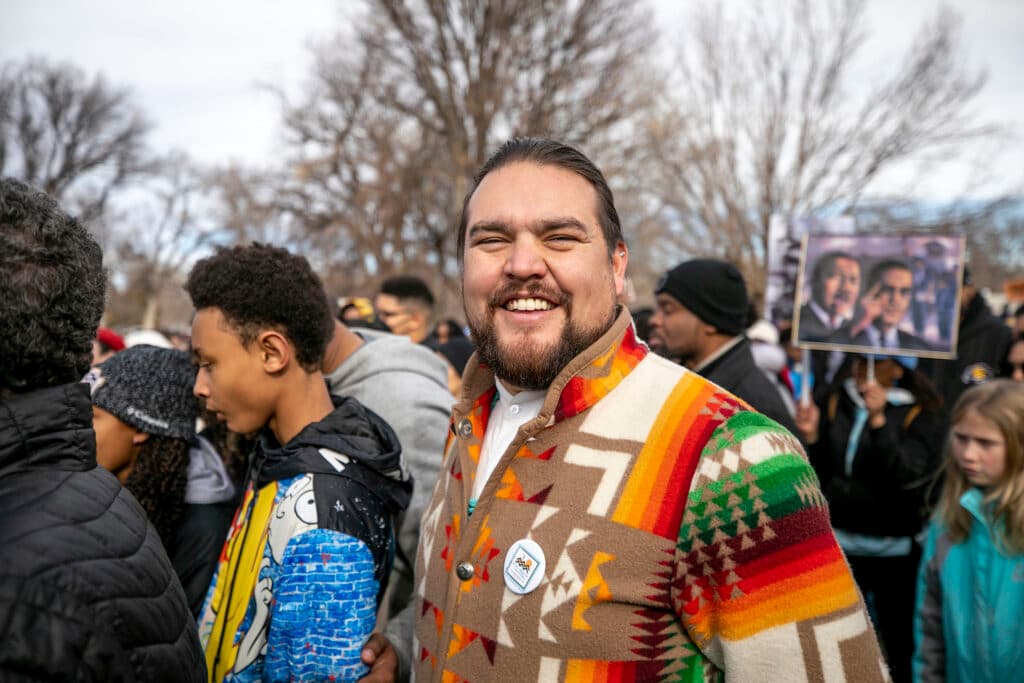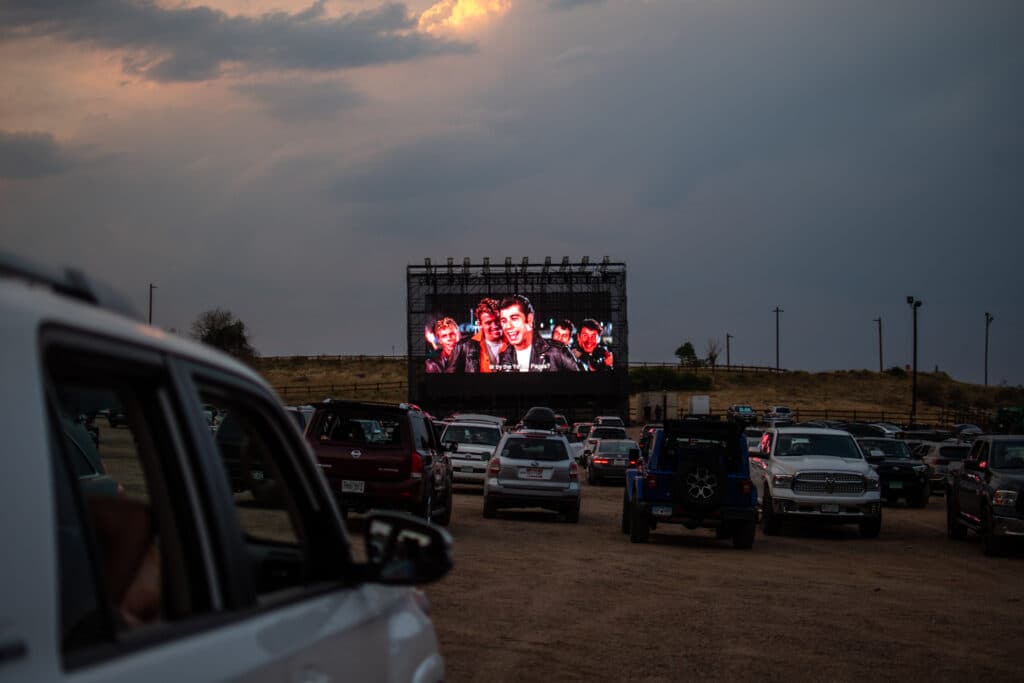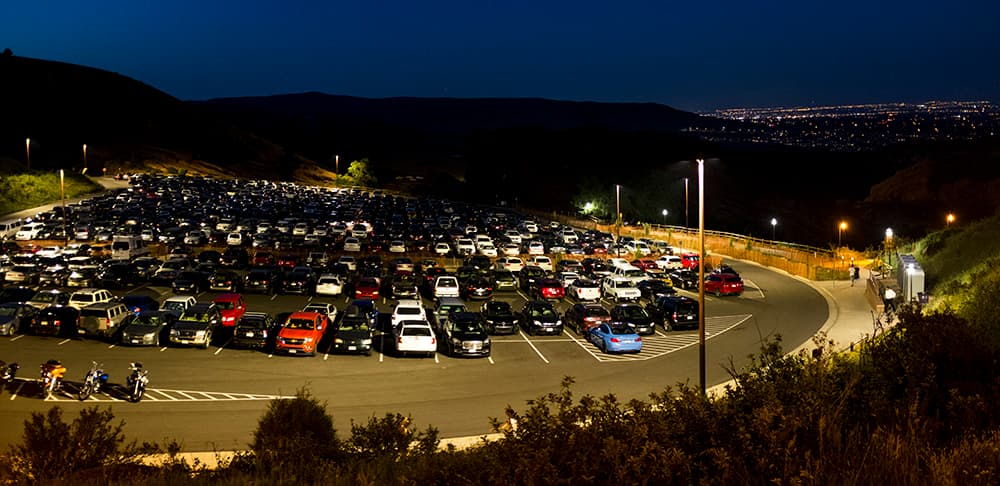Imagine a race to a Red Rocks concert between drivers, bikers and public transit users.
The drivers would make it, though traffic would be bad, parking would be a pain and departing would be horrifically slow.
The bikers might get to the show, if their lungs hold up. But cycling down the winding roads from Red Rocks, the bikers would be in danger, trying not to get hit by drunk drivers.
Don Strasburg, co-president of AEG Presents: Rocky Mountains, the entertainment corporation that books most of the concerts at the venue, generally supports alternative transportation to his concerts.
But biking to a concert at Red Rocks?
"I would actually encourage you to not," he said. "You have a lot of cars traveling down that road. It’s dark. Look, the roads are for everybody, but I don’t want you to get hurt.”
As for the transit user trying to get there?
That person would be out of luck and forced to stay home after looking up directions and realizing there was no way to get to Red Rocks by bus or train.
In a city that spends more than $40 million annually to cut carbon emissions by funding alternatives to cars, it’s surprising: The region’s public transit system has no way to get to the region’s most iconic public venue at concerts that brought in more than 1.4 million people last year.
A decade ago, environmental activist Ean Thomas Tafoya, then a City Council candidate, discovered this for himself.
He and his friends bought tickets to see Gramatik at Red Rocks. When it came to getting there, he looked for a public option, but there was nothing to be found.
So they booked a pricy bus to take them to the show. As so often happens at Red Rocks, the weather turned cold, sleety and snowy. It was so bad the show was dubbed Blizzmatic.
“There were people who were stuck there because there weren't transportation options,” Tafoya said.
The guy driving the party bus down the hill warned them he had recently moved to Colorado from Florida and had no clue how to drive in the snow. Tafoya was baffled, and he started thinking: It’s time there’s a safe, reliable public transportation option for Red Rocks.
He connected with now City Councilmember Darrell Watson, and the two of them, along with former City Councilmember now Parks and Rec head Jolon Clark, started talking about getting transit to Red Rocks.

In the years since, Tafoya’s championed the idea, as he’s served on the parks board, run for Denver City Council, and then for mayor.
He's held signature drives pushing transit to Red Rocks. He's testified before RTD's board and City Council. And he's even made promotional videos on the subject.
For a park that sees millions of visitors a year, it's just plain logical, he said. Transit would be good for the climate and create equitable access for people who can't afford car ownership but can pay for a bus ticket.
A public option could also be good for concertgoers who snarl traffic and often drive intoxicated to and from shows, risking their own lives and those of others.
Nearly a decade since Tafoya first started working on the issue, first-time District 9 City Councilmember Watson has started lobbying for a regional solution for people looking to enjoy the venue.
“We know that the great majority of those — over 90% — are driving, often in single occupancy cars, impacting our environment, impacting their health and their safety,” said Watson. “That many cars going through narrow roads through Morrison and Golden isn't safe. So what we do know is that there needs to be an alternative.”
Watson moved from his home in the Virgin Islands to Denver when he was 17, in part after watching a video of U2 playing Red Rocks and thinking the venue looked like Mars. Two weeks after he moved, he begged for a ride to the venue "so I could see Mars."
He would prefer to have been able to take the bus.

Watson, Tafoya and Jefferson County Commissioner Andy Kerr have started organizing to create some sort of shuttle from the W Line to the venue that would bring riders to and from the broader RTD transit system.
Watson said the shuttle could be created by local governments rather than RTD, but he would welcome collaboration from the agency.
What’s the concrete plan? Who are the partners? What are the funds?
All that’s in the works, and the organizers’ last meeting was snowed out. But they’re prepared to figure it out in the coming months, raise funds over the summer and try to have something in place by 2025.
Tafoya even hopes that during RTD’s Zero Fair for Better Air month that there might be a pilot project in the works for concertgoers, Red Rocks staff and other people who want to use the mountain parks.
“This discussion of public transportation to Red Rocks has been bogged down in ‘Where do you get the money from?’” Watson said. “What we wanted first and foremost was to hear: What are the unique ideas that you have to meet the need of a million folks driving to Red Rocks?”

Once those ideas are amassed, each county will look at its budget and decide where the money will come from, he explained.
Denver, as he sees it, should not be driving the process.
“Often times, when Denver's doing regional approaches with other counties, we come in with big ideas, and we tell folks what to do,” Watson said. “This process has been very different. We have been listening.”
Though Watson has been helping to facilitate the meetings, City of Denver representatives have been outnumbered in discussions by decision-makers from Jefferson County.
RTD, itself, has largely been kept of the project.
Board members were troubled when stories about public transit coming to Red Rocks made the news and they didn't know about the idea. They discussed media reports about the project and their confusion with Watson’s comments to Channel 9 news at a March 21 meeting.
Members wondered why the district would consider adding services to Red Rocks when projects in their individual communities had been put on hold.
“I, nor our planning department, nor our service planning division have had any discussions relative to this,” RTD Executive Director Debra Johnson told them.

She had a recent meeting with Watson about connecting the L Line to the A Line, and she said the Red Rocks proposal didn’t come up at all.
In fact, the board RTD slashed W line hours from 4:30 a.m. to midnight Sunday through Thursday, and between 5 a.m. and 2 a.m., Friday and Saturday, creating an additional barrier for creating public transportation between the W Line and the venue.
Strasburg of AEG has been following the issue in the media, though the organizers have not reached out to his company.
The demand for alternative ways of getting to Red Rocks, he says, is high. The private sector has met the need for years through expensive rideshares, private shuttles and party busses.
Even so, he’d like to see more options available.
RTD would need to keep the trains running late enough. Trains and shuttles would need to be on schedule. And the coordination would need to be strong. Is that possible? He doesn't know.
“If it provided another safe way for people to get to an event,” he said, “then that's a massive winner.”













